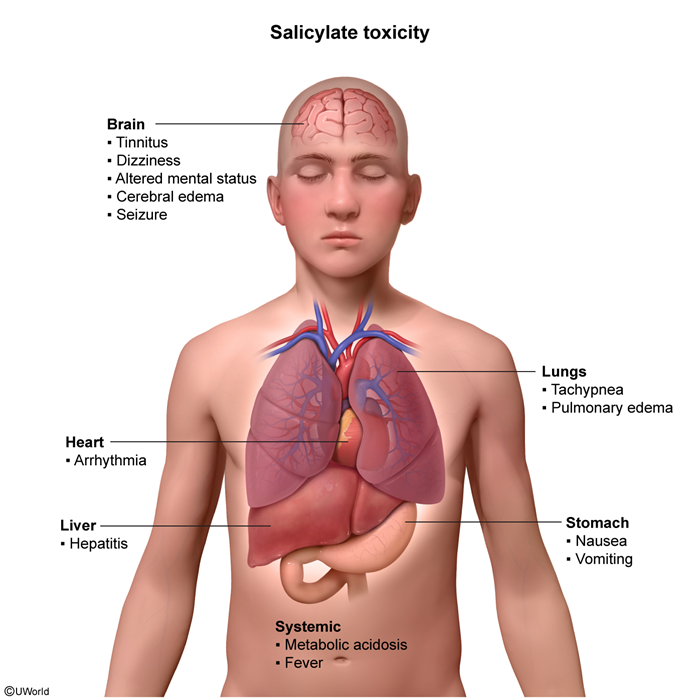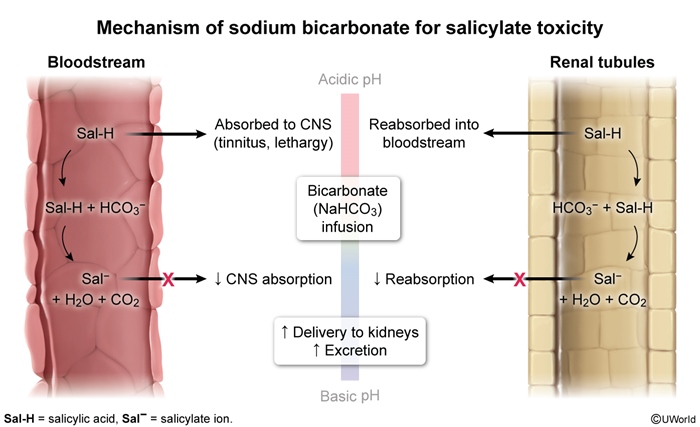Salicylate (Aspirin) Toxicity
Article Sections
Introduction
Salicylate toxicity results from the ingestion or absorption of salicylates (eg, aspirin, oil of wintergreen), which inhibits cellular metabolism and causes elevated anion gap metabolic acidosis, as well as respiratory alkalosis. The mixed metabolic acid-base disturbance can lead to multisystem organ failure and critical illness and is managed primarily with serum/urinary alkalinization and hemodialysis if needed.
Risk factors
- Acute toxicity:
- Depression and suicidal ideation.
- Pediatric populations (accidental ingestion due to exploratory behavior).
- Large ingestions can result in bezoar formation, which slows gastrointestinal transit and increases absorption.
- Chronic toxicity:
- Chronic pain and use of salicylate-based pain control.
- Hepatic or renal impairment (decreased metabolism and excretion).
Pathophysiology and clinical presentation
Salicylates exert their toxic effects primarily by uncoupling oxidative phosphorylation in the mitochondria, leading to lactic acid accumulation from anaerobic metabolism and hyperthermia (by-products of energy production are dissipated as heat). Increasing serum concentrations of lactic acid and ketoacids leads to elevated anion gap metabolic acidosis.
Continue Learning with UWorld
Get the full Salicylate (Aspirin) Toxicity article plus rich visuals, real-world cases, and in-depth insights from medical experts, all available through the UWorld Medical Library.
Figures

